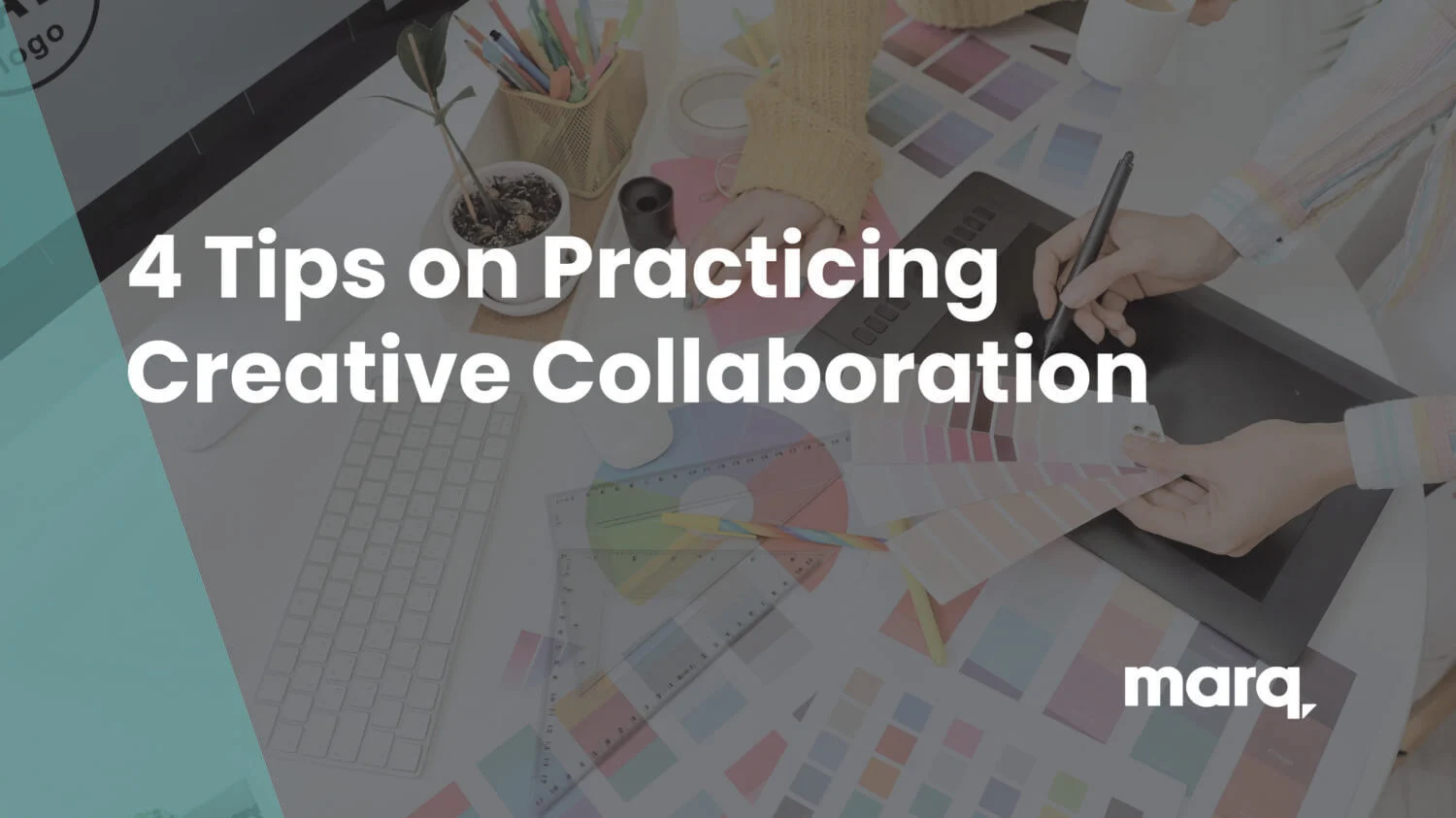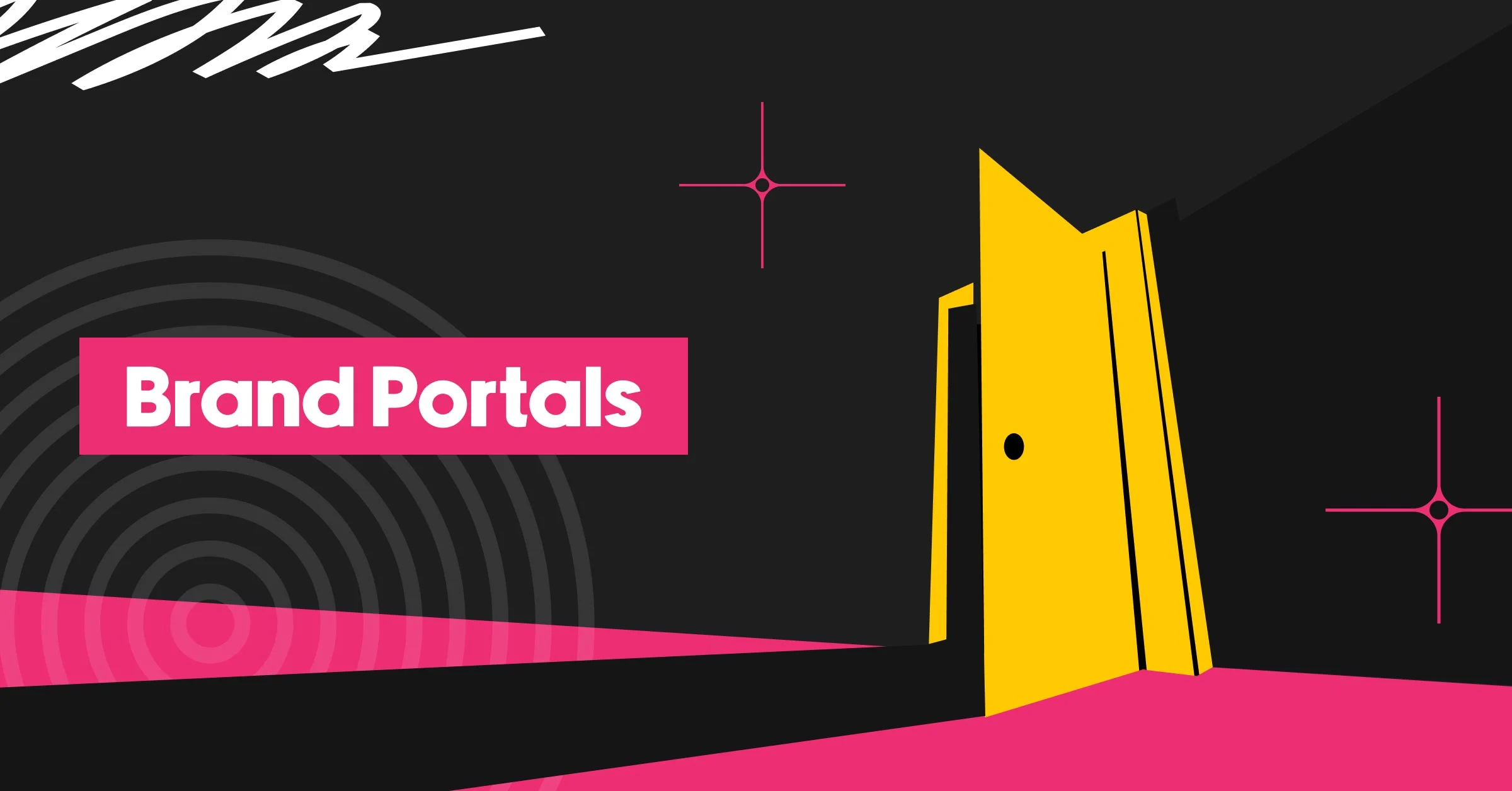Have you heard of the ‘lone genius’ myth? It’s the idea that the world’s greatest creatives – think Michelangelo, Einstein, or Steve Jobs – accomplished their artistic and technological feats by themselves. It can be an attractive myth, especially for creative and artistic types, but it doesn’t tell the full story behind these world-changing ideas. Collaboration has been and always will be a vital part of the creative process – even if it might not seem as glamorous. And while your creative team might not be trying to reinvent the wheel with your brand projects, collaboration can be the key that unlocks a new level of depth and potential impact within your work. But don’t just take our word for it. In this blog, we’ll answer the question, “How does collaboration expand the creative process”?
We’ll outline the four stages of the creative process and illuminate how working together can take creative ideas from good to great.
Why is collaboration important in creativity?
These days, especially if you’re working with highly distributed teams, it can feel like collaboration is more of a roadblock to creativity than an aid. But it’s all about shifting this mindset.
Imagine you’re working on a new infographic for your sales team. You’re not entirely sure how to visually represent some of the information you’re working with, but you charge on anyway with your best ideas. You now have a decent piece of sales content, but it doesn’t perform as well as you might’ve hoped.
Now imagine that instead of working alone, you collaborated from the start with one of your senior graphic designers. Working together, you found innovative ways to showcase your content, resulting in an end product that outperformed your expectations.
Time and time again in history, the best ideas are brought to life when people who bring different skills and experiences work together. The more minds you can bring together under a common goal, the more productive and efficient your creative process can become as well. A well-organized creative team can create better content faster.
So what can creative collaboration look like in your organization?
- Internal collaboration: Working together with your own team members or teams from other departments within your company.
- External collaboration: Working with external partners like freelancers and clients.
- Vertical collaboration: Collaborating with teams and stakeholders at all levels of your organization.
- Horizontal collaboration: Collaborating with the same level of employees within your organization or department.
Collaboration at any of these levels can supercharge your ability to meet deadlines, stay agile, and produce content with the biggest impact.
How does collaboration expand the creative process?
We can break the typical creative process down into four stages:
- Preparation: The preparation stage is all about deciding what shape your project will take. Are you making a video or a blog, an infographic, or script? In this stage, you’ll gather inspiration and resources, and think about any potential problems or challenges you might face in the creative process.
- Incubation: This is the stage where connections start to happen. Your mind is turning your ideas over and over, analyzing them from every angle.
- Illumination: Here’s where that famous ‘aha!’ moment comes into play. You’ve now got a fully formed idea and roadmap on how to get there.
- Verification: In this stage, your idea enters the process of becoming reality. You continue to refine and reshape, until you get a fully-formed end product. Then, it’s time to evaluate. If you still find flaws or opportunities to strengthen your idea, you move back to the drawing board and begin the iterative process.
And while a person can move between these four stages of the creative process on their own, collaboration can make the journey from point A to point B much easier.
How collaboration enhances creativity at the preparation stage
When you’re in the preparation stage, you’re gathering as much information as possible about the type, size, and scope of your project. This process is incredibly important because it sets the foundation and direction of your creative work. The most successful projects start with a clear understanding of what you and your organization want to achieve, what kind of resources you have at your disposal, and what constraints or issues you may have to watch out for.
Tackling this stage of the creative process with others can help you uncover more ideas, explore different strategies, and flag even more potential challenges and opportunities.
Tips for collaboration at this stage:
- Start with a lot of conversation, preferably face-to-face.
- Set up a clear set of team goals for the project.
- If you have a physical workspace, make sure it’s conducive to creativity (think quiet, open spaces with plenty of tools)
- Look for people who have similar skills – you might end up grouping them together for certain tasks.
Why collaboration propels the incubation stage
The incubation stage can oftentimes be one of the longest and hardest parts of the creative process. You’re allowing your mind to process the information you gathered in the first stage while you work on other things. Sometimes this can lead to a quick “Aha!” moment, but it can also lead to mental blocks.
Undergoing this process with a team ensures multiple people are actively engaging and thinking about the project. Bouncing around ideas together can help you make new connections and uncover new insights and potential solutions that you might not have been able to see otherwise.
Tips for collaborating at this stage:
- Empower people to actively share ideas and potential solutions, without having to get the approval or input of someone higher up.
- Allow enough time for people’s thoughts to fully marinate before deciding on a course of action.
- Hold short meetings to gauge progress and share thoughts.
How collaboration refines the illumination stage
Breakthroughs happen at the illumination stage. Whether you finally found a solution to a problem or made a connection that will take your project to the next level, this is the stage where your end product starts to take shape.
At this stage, you may have various possible ideas and solutions competing for attention in your mind. Collaborating with your team members can make it easier to sort through these ideas, refining the best ones before deciding to move forward.
Tips for collaborating at this stage:
- Make sure everyone has a voice. Give people an open floor to discuss their ideas and share thoughts/critiques
- If you’re working with a lot of ideas, hold a vote to narrow down the top choices.
Implementing collaboration at the verification stage
You’ve got a great idea – what now? At this stage in the creative process, your goal is to test if your idea holds up in reality. You’re also communicating the value behind your idea to make sure it meets the goals it set out to achieve.
If there are any cracks in your idea, this is where they’ll start to show. But you might not know them if you’re not collaborating with others. By working through this stage as a team, you can share and discuss real-time feedback, which will ultimately help you test and refine your idea until it’s perfect.
Tips for collaborating at the verification stage
- Create a standardized feedback process that everyone working on the project can participate in.
- Curb your enthusiasm. Even if you love your idea, it might not suit the project’s goals. Encourage openness and collective ownership over ideas to avoid resentment popping up.
After plenty of discussion, feedback, and refining as needed, you and your team can present your fully-formed creative project to the rest of your organization. And it will be all the stronger because you worked together.
There’s no scaling up creativity without collaboration. And at Marq, we believe in breaking down barriers to creative collaboration. With our brand templating platform, anyone in your organization can take action on their ideas and maintain brand consistency. Schedule a demo today and see how we can help streamline your team’s creative process.



